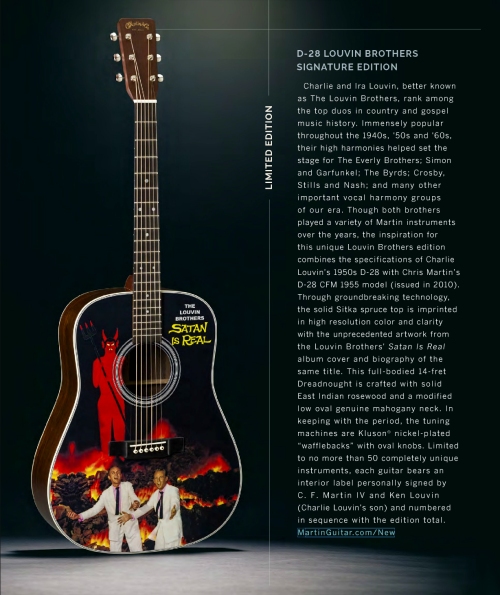
This Old Guitar – Hank Williams 1941 Martin D-28
A one hour radio program of an interview with Neil Young on CD called Companion contains extensive insight into Prairie Wind’s recording, as well as, much other interesting stuff. In the interview by JODY DENBERG, Neil is asked about the Martin guitar that belonged to Hank Williams.
NEIL YOUNG: Yeah. I bought it from, uh, uh, off a friend of mine Grant Boatwright put me together with, uh, this fellow Tut Taylor he had an old, uh, collection of guitars. And, uh, I went down there and there it was, and he took it out of the back and brought it out and I bought it. I couldn’t believe that I could buy it. That I, you know, but I did. And now I have it. And, you know, I’ve got it for a while and I’m taking care of it.
JODY DENBERG: But you’re generous with it. You’ve lent it to some of your friends?
NEIL YOUNG: You know, Bob Dylan was using my bus. He, he didn’t have his own tour bus yet. And he was just getting into using buses, and, uh, so I let him use mine and, uh, when I gave it to him I, I told him that, uh, Hank was in the back and that if he wanted to use Hank, that Hank would be there for him. And so I don’t know what he did with it, but he had it with him for a long time. And I don’t know what he wrote or what he did, but I know, you know, something must have happened back there. Taken from Bob Dylan’s gear





 Peter Green 1959 Gibson Les Paul Standard
Peter Green 1959 Gibson Les Paul Standard








 Roy bought Nancy in 1969 from a guy that passed him in the street carrying the guitar.
Roy bought Nancy in 1969 from a guy that passed him in the street carrying the guitar. In 1960 Roy Buchanan replaced Fred Carter Jr. as guitarist in Ronnie Hawkins’ Hawks. After a short period, he left the Hawks and teenager Robbie Robertson took over the lead guitar. Buchanan, one of Robertson’s main guitar influences, also performed as an opening act for the reunited Band on their 1987 tour. Levon Helm mentions in his book, This Wheel’s on Fire – Levon Helm and the Story of The Band, that they thought Roy was an amazing guitar player but he was too weird to have in the band, hence they let Robbie take over once he had taken a few guitar lessons from Roy.
In 1960 Roy Buchanan replaced Fred Carter Jr. as guitarist in Ronnie Hawkins’ Hawks. After a short period, he left the Hawks and teenager Robbie Robertson took over the lead guitar. Buchanan, one of Robertson’s main guitar influences, also performed as an opening act for the reunited Band on their 1987 tour. Levon Helm mentions in his book, This Wheel’s on Fire – Levon Helm and the Story of The Band, that they thought Roy was an amazing guitar player but he was too weird to have in the band, hence they let Robbie take over once he had taken a few guitar lessons from Roy. Stevie Ray Vaughan – Live in Japan, January 24, 1985
Stevie Ray Vaughan – Live in Japan, January 24, 1985
 Lowell George struggled quite a lot in life and was addicted to cocaine and hamburgers but he was a helluva slide player. Little Feat, the best kept secret of the Seventies.
Lowell George struggled quite a lot in life and was addicted to cocaine and hamburgers but he was a helluva slide player. Little Feat, the best kept secret of the Seventies. David Gilmour’s black 1969 Fender Stratocaster
David Gilmour’s black 1969 Fender Stratocaster It went through quite a few changes over the years, new necks and pickups. He bought it in 1970 from Manny’s Music in New York as a replacement for his Strat that was stolen a few weeks earlier.
It went through quite a few changes over the years, new necks and pickups. He bought it in 1970 from Manny’s Music in New York as a replacement for his Strat that was stolen a few weeks earlier.